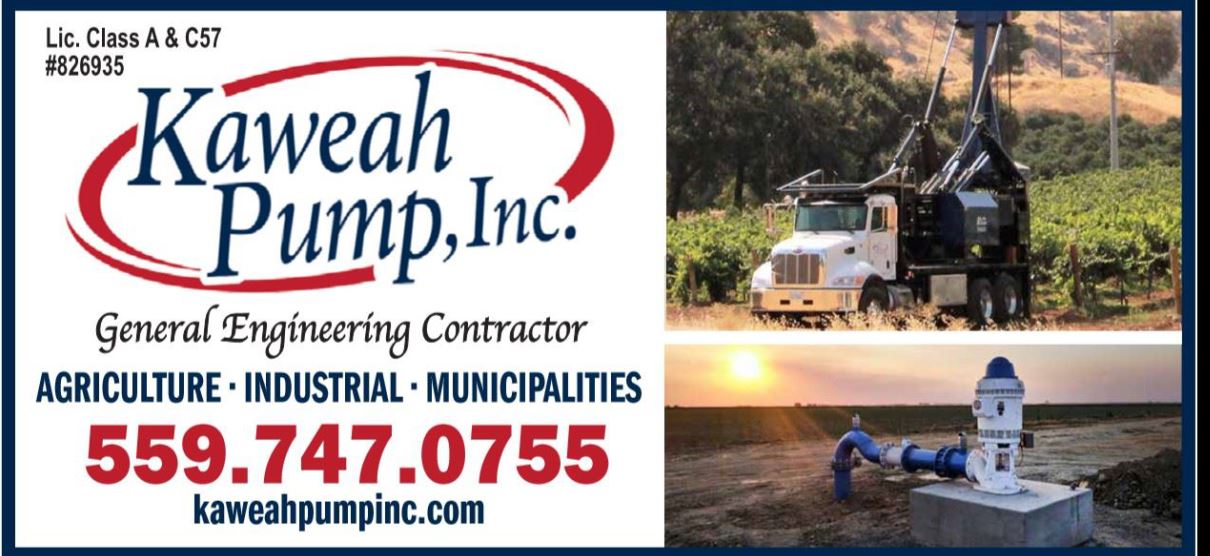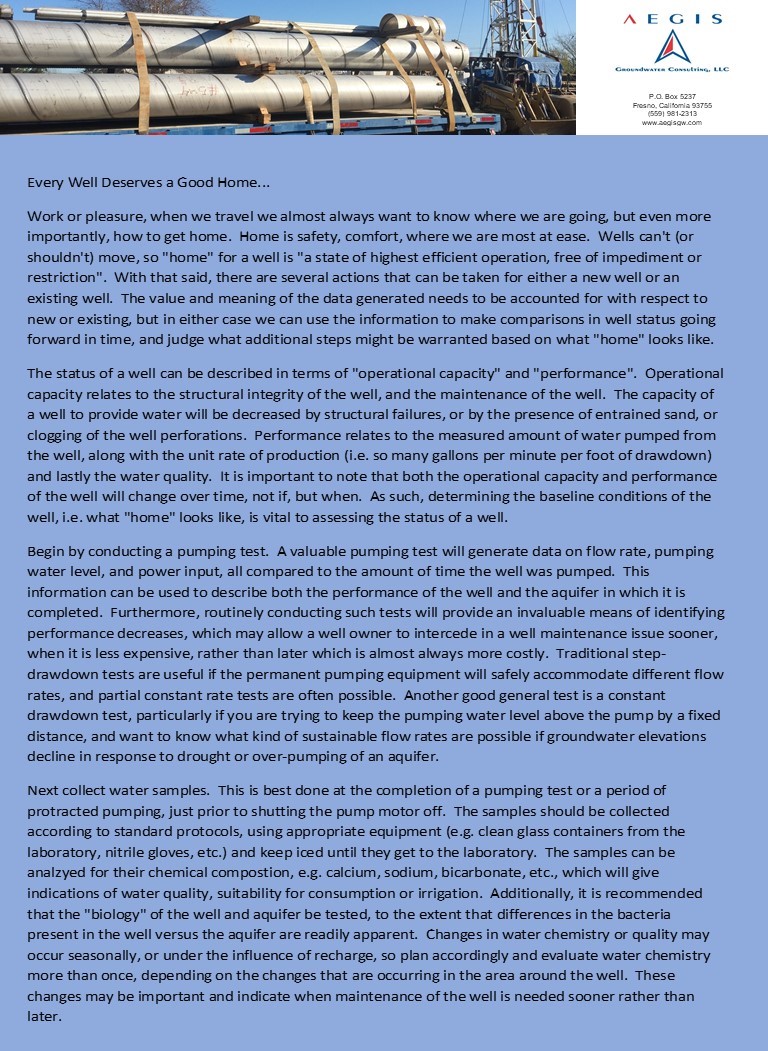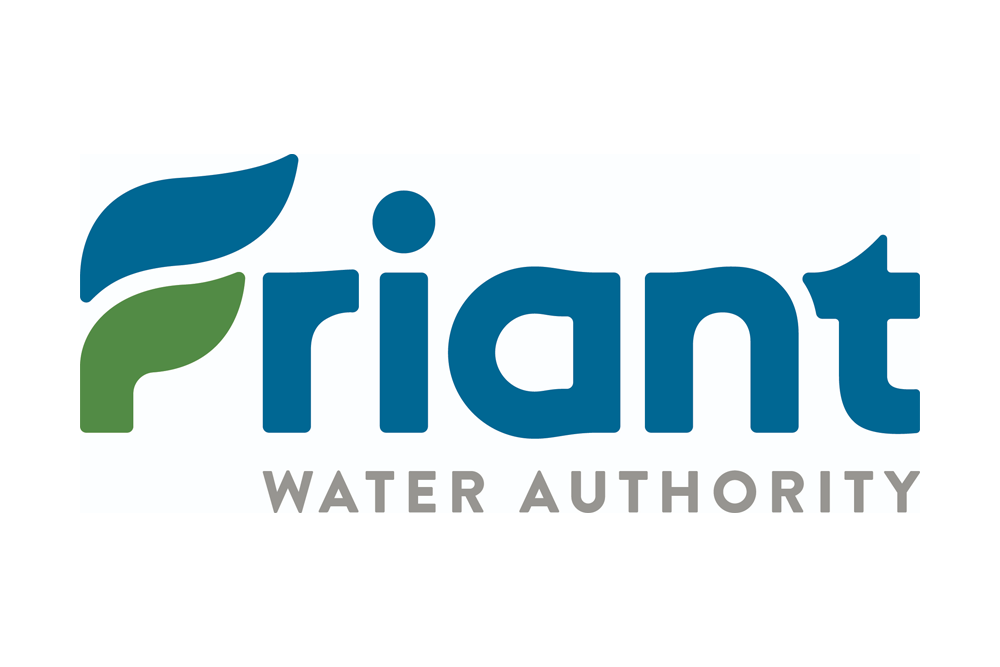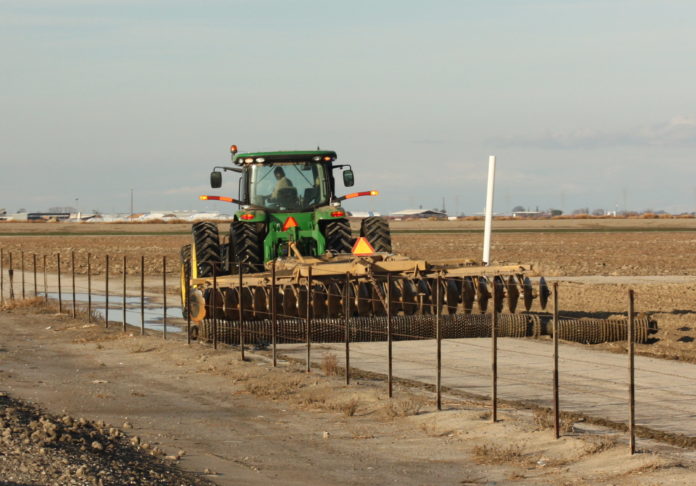 The East Kaweah Groundwater Sustainability Agency held its Technical Advisors Committee meeting on Monday, May 6, 2019 at the Exeter Museum. Before the meeting began I wanted to share with you an email I received from Maven’s Notebook this morning regarding the comment period for the SGMA grant program; OPPORTUNITY TO COMMENT: Public Comment Period Opens for Sustainable Groundwater Management Grant Program. It’s an interesting look at how the state takes tax payer money from an area and sets up a competitive process to get part of it back. I mean, that’s one way to look at it. Another
The East Kaweah Groundwater Sustainability Agency held its Technical Advisors Committee meeting on Monday, May 6, 2019 at the Exeter Museum. Before the meeting began I wanted to share with you an email I received from Maven’s Notebook this morning regarding the comment period for the SGMA grant program; OPPORTUNITY TO COMMENT: Public Comment Period Opens for Sustainable Groundwater Management Grant Program. It’s an interesting look at how the state takes tax payer money from an area and sets up a competitive process to get part of it back. I mean, that’s one way to look at it. Another  way might be; by pooling our resources we can accomplish much more provided the state agrees to give us part of our resources back.
way might be; by pooling our resources we can accomplish much more provided the state agrees to give us part of our resources back.
The meeting was posted on the EKGSA website as starting at 10am but they went ahead and started at 9am without me. When I entered the meeting the topic was agenda Item 5 something talking about how to meter. There was a gentleman tying to sell the GSA on his sensor system. I hate walking in late. Perhaps its not a sensor because he put up a slide that looked like a half mile high Google Earth shot with only the irrigated portions highlighted. He said he has an army of college interns ground-truthing the images are accurate. Determining  evapotranspiration by satellite isn’t new, well its new but not that new. Using ET as a measure of water usage as opposed to metering. Chairman Tim Gobler said they have tried this at Semitropic Water Storage District and found metering to be a higher amount of usage. Craig Wallace, General Manager Lindsay Strathmore Irrigation District said management areas will have some benefits. Gobler, who attends Semitropic said it was a big lift to connect the growers to the info. EKGSA Executive Director Mike Hagman said the area is fairly homogenous for ET. The slide stated, “Robust ground truthing is critical. . .” There’s that word again.
evapotranspiration by satellite isn’t new, well its new but not that new. Using ET as a measure of water usage as opposed to metering. Chairman Tim Gobler said they have tried this at Semitropic Water Storage District and found metering to be a higher amount of usage. Craig Wallace, General Manager Lindsay Strathmore Irrigation District said management areas will have some benefits. Gobler, who attends Semitropic said it was a big lift to connect the growers to the info. EKGSA Executive Director Mike Hagman said the area is fairly homogenous for ET. The slide stated, “Robust ground truthing is critical. . .” There’s that word again.
Recall when George W. Bush announce Dick Cheney as his Vice Presidential running mate and like lemmings in lockstep the media pronounced the move added gravitas to the ticket? Dozens and dozens of talking heads used the word gravitas. A couple of years ago an Australian named Mike Young came to the Valley to talk about ways to deal with SGMA.  One of the goals he stated was a robust water market. He planted a robust seed to use the word robust robustly. I heard and read the word used more since Young’s visit than all the years previously put together.
One of the goals he stated was a robust water market. He planted a robust seed to use the word robust robustly. I heard and read the word used more since Young’s visit than all the years previously put together.
Hagman urged the meeting move forward and urged looking into remote sensing. There was a little more talk and Gobler suggested this presentation or a version of it be presented to the board and to get some input from the other GSAs in the Sub Basin. There was a tepid motion, tepidly endorses to kick this up to the board next month.
Next consulting engineer from Provost & Pritchard Matt Klinchuch presented the estimated allocation of total Native, Foreign and Salvaged water. I did not have these figures available but the total was about 124,000 a/f annually. Grower Karen Yohannes said she’d like to see the GSA act in collaboration with the white areas to help them in their tight spot. Hagman said the GSA’s role is to be sustainable but it is only wise to be sure the neighbors aren’t over-pumping so developing the assets locally is the best choice. Gobler said the concern management areas won’t constrain transfers is valid. Hagman said he doesn’t see any of the IDs in EKGSA being willing to  sell water outside the GSA. Cash pales in comparison to groundwater sustainability. The East Kaweah could be divided into nine management areas; each with their own unique needs under the current proposal. This is an approach proving popular with other GSAs. The committee voted to send this up the ladder to the board as well.
sell water outside the GSA. Cash pales in comparison to groundwater sustainability. The East Kaweah could be divided into nine management areas; each with their own unique needs under the current proposal. This is an approach proving popular with other GSAs. The committee voted to send this up the ladder to the board as well.
Klinchuch said there has been an attempt to locate wells in the management areas. They are looking at water depth and monitoring availability. These 1,278 wells were further divided into 10 areas within the GSA. The wells groundwater elevations and depth to groundwater were estimated out to 2040 as a guide to developing portions of the GSP. Specific numbers are beginning to emerge. He showed the results of no action by management area. The remaining feet from the  water level to the bottom of the aquifer can be established which will come in handy for deciding what the minimum threshold should be. He also said about 20 percent of all the wells will go dry without some change to the current practice. That raises the question or questions; is it undesirable for select wells to go dry? If so, which ones? This isn’t an easy answer. For instance the southwest management area has 1,507 feet of aquifer left but 40 of its wells will go dry in the non-action scenario. The northeast management area has only 25 feet left but only nine percent of its wells are expected to go dry. The data presented by Klinchuch will be taken by the TAC members who will come back in two weeks on May 20th AT 2pm before the advisory committee meets with recommended minimum thresholds. Also, time is slipping away to get this all in the GSP for review and comment. And engineer Nick Keller also reminded them they need to assemble all the data gaps per management area so future adjustments can be considered.
water level to the bottom of the aquifer can be established which will come in handy for deciding what the minimum threshold should be. He also said about 20 percent of all the wells will go dry without some change to the current practice. That raises the question or questions; is it undesirable for select wells to go dry? If so, which ones? This isn’t an easy answer. For instance the southwest management area has 1,507 feet of aquifer left but 40 of its wells will go dry in the non-action scenario. The northeast management area has only 25 feet left but only nine percent of its wells are expected to go dry. The data presented by Klinchuch will be taken by the TAC members who will come back in two weeks on May 20th AT 2pm before the advisory committee meets with recommended minimum thresholds. Also, time is slipping away to get this all in the GSP for review and comment. And engineer Nick Keller also reminded them they need to assemble all the data gaps per management area so future adjustments can be considered.
The hydra of water quality was next. Parts per million, billion and trillion are easier for laymen to understand than ug/L or mg/L and the engineering team was asked to create a new column on the reports. It isn’t, as Gobler pointed out, the GSA’s  job to improve water quality, only to not make it worse. There were some questions about the wisdom of trying to measure ag irrigation on drinking water standards. Subsidence is also an undesirable result and Klinchuch showed some more graphs and charts about what subsidence at various rates in the EKGSA near the Friant Kern Canal would do to capacity. Unfortunately I couldn’t read part of it but the reduction of the parts I could see are considerably less than that taking place further south at Deer Creek.
job to improve water quality, only to not make it worse. There were some questions about the wisdom of trying to measure ag irrigation on drinking water standards. Subsidence is also an undesirable result and Klinchuch showed some more graphs and charts about what subsidence at various rates in the EKGSA near the Friant Kern Canal would do to capacity. Unfortunately I couldn’t read part of it but the reduction of the parts I could see are considerably less than that taking place further south at Deer Creek.
Gobler suggested all the data pertaining to minimum Exeter Museum thresholds be sent to the TAC members and come back with suggestions. Klinchuch said the deadline for feedback on the GSP chapters already released is now. The next meeting will be here at the Museum May 20th 2pm and Gobler mercifully adjourned what had become a very long the meeting.
DISCLAIMER OF RESPONSIBILITY; Waterwrights strives to provide his clients with the most complete, up-to-date, and accurate information available. Nevertheless, Waterwrights does not serve as a guarantor of the accuracy or completeness of the information provided, and specifically disclaims any and all responsibility for information that is not accurate, up-to-date, or complete. Waterwrights’ clients therefore rely on the accuracy, completeness and timeliness of information from Waterwrights entirely at their own risk. The opinions expressed in this report are those of the author and do not represent any advertisers or third parties.
ALL RIGHTS RESERVED. Copyright 2019 by Don A. Wright
SGMA The Sustainable Groundwater Management Act of 2014 calls for the formation of Groundwater Sustainability Areas within Basins and Sub-basins to develop Groundwater Sustainability Plans.
EAST KAWEAH GSA 315 E. Lindmore Street, Lindsay, CA 93247. Telephone 559/562-2534. Mailing address PO Box 908 Lindsay, CA 93247 Meetings are generally the 4th Monday of the month at the Lindsay Wellness Center at 3:00 pm.
Members: County of Tulare, City of Lindsay, Exeter ID, Ivanhoe ID, Lindsay Strathmore ID, Lindmore ID and Stone Corral ID
Staff: Michael Hagman – Executive Director, Joe Hughes – Attorney
DWR Listing: Basin San Joaquin Valley, Sub Basin Kaweah 5-022.11


































